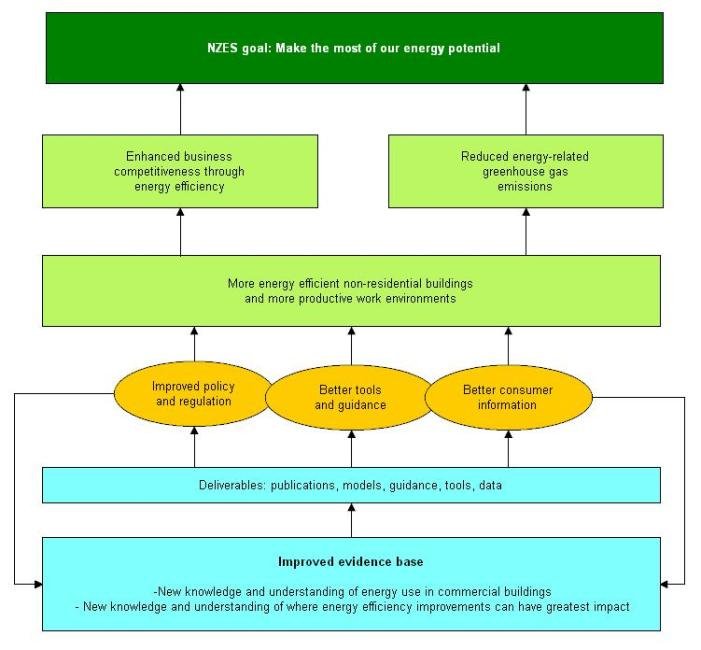Research questions
- What is the aggregate energy/water consumption of non-residential sector buildings?
- What is the average energy and water use per unit area per year of the non-residential sector?
- What categories of non-residential buildings appear to contribute most to the aggregate energy/water consumption of the non-residential sector?
- What is the average energy use per unit area of each selected non-residential building category?
- What are the uses to which energy/water are directed?
- What are the determinants of those patterns of use? These include building structure and form, function and other attributes such as climate, ownership, multi-use, occupancy, city/town position and building age.
- What are the critical intervention points to improve non-residential building resource efficiency? These include building envelope and amenities, building management and occupant behaviour.
- What is the likely change in energy and resource demand from the non-residential sector buildings into the future as stock type and distribution change?
Objectives
The overall goal of BEES was to understand how energy and water is used in New Zealand's non-residential buildings and identify opportunities for improved resource efficiency as well as comfort of occupants. The programme had 12 key objectives:
- Quantify and characterise the energy use in New Zealand non-residential buildings.
- Understand how energy is used in today's non-residential buildings.
- Support the reduction of greenhouse gas emissions and adaptation to climate change.
- Provide design and operation guidance to reduce energy consumption and greenhouse gas emissions.
- Improve the basis for government policy development and implementation.
- Improve models of non-residential building energy use.
- Provide guidance to create more productive work environments.
- Improve the basis for development of the New Zealand Building Code, standards and energy rating tools such as GreenStar.
- Make results available to stakeholders and the public.
- Provide stakeholders with new knowledge on the best opportunities to improve resource use efficiency.
- Ensure that the study complements rather than duplicates other relevant research activities.
- Ensure the data collection and analytic activities are cost-effective and right for use.
Outcomes
Drawing on the research objectives, the BEES team derived a set of outcomes:
- New knowledge and improved understanding of energy use in non-residential buildings.
- Improved understanding of where to target energy-efficiency improvements so they have the greatest impact on energy use.
- Improved evidence base for informing policy, regulation and initiatives in relation to energy efficiency.
- Better informed policy makers, designers, builders, building managers and other industry stakeholders in relation to energy use.
Working with government and industry stakeholders, achieving these outcomes results in:
- improved policy
- better tools, guidance and information for industry and consumers
- reduced greenhouse gas emissions
- improved productivity and savings for business
- more energy-efficient non-residential buildings.
These outcomes align with the revised New Zealand Energy Strategy (NZES) and companion New Zealand Energy Efficiency and Conservation Strategy (NZEECS). The outcomes contribute to the NZES goal - make the most of our energy potential.
A relationship between these outcomes is shown here.
